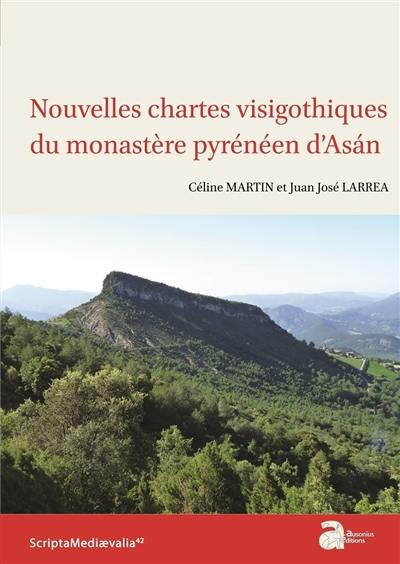
Fiche technique
Format : Broché
Nb de pages : 256 pages
Poids : 498 g
Dimensions : 17cm X 24cm
ISBN : 978-2-35613-371-7
EAN : 9782356133717
Nouvelles chartes visigothiques du monastère pyrénéen d'Asan
Quatrième de couverture
Nouvelles chartes visigothiques
Le royaume visigothique de Tolède (VIe-VIIe siècles) est surtout connu à travers des sources normatives et narratives. Les documents de la pratique font presque totalement défaut : jusqu'à très récemment, seul paraissait subsister le texte complet de deux chartes. Or la découverte et édition récentes de quatre chartes supplémentaires, provenant comme les deux précédentes du monastère pyrénéen Saint-Martin d'Asán, jette un jour nouveau sur le VIe siècle hispanique.
Ce volume propose ainsi la première réflexion collective d'historiens, d'archéologues et de philologues sur le corpus des six chartes d'Asán. Les contributions étudient l'ancrage territorial du monastère à travers les siècles et les systèmes d'exploitation qui le faisaient vivre, entre la plaine, le piémont et la haute montagne. Elles interrogent aussi l'expérience monastique pyrénéenne, l'une des premières connues en péninsule Ibérique, et ses liens avec le monachisme de Gaule méridionale et d'Italie. Elles découvrent la précocité inattendue du type documentaire de la charte de donation, socle s'il en est du travail des médiévistes. Elles mettent en évidence le rôle social de médiation joué par l'établissement ainsi que ses liens étroits avec le pouvoir royal arien, liens forgés à travers la manipulation du système fiscal et la nomination d'évêques issus d'Asán, et à la faveur de sa situation de carrefour, dans un contexte de relations conflictuelles entre royaumes post-romains. Enfin elles incitent à reconsidérer avec attention certains documents plus tardifs liés au monastère : avec les dossiers hagiographiques de Victorien d'Asán et de Gaudiosus de Tarazona sont proposées ici les éditions critiques de leurs principaux témoins.
Le corpus des chartes d'Asán, encore peu connu du public et des spécialistes, ouvre de nouvelles perspectives pour la connaissance des sociétés d'Europe méridionale dans les générations immédiatement postérieures à la fin de l'Empire tardif en Occident.
The Visigothic kingdom of Toledo (6th and 7th centuries) is known primarily through the existence of a body of narrative and normative sources. Visigothic charters are almost totally lacking, and until very recently the complete texts of only two of them were known. Therefore, the recent discovery and publication of an additional four charters, all connected, like the other two, to the Pyrenaean monastery of San Martin de Asán has shed new light on aspects of the 6th century in the Iberian Peninsula.
This book offers the first collective discussion of this corpus of six charters, by archaeologists, historians, and philologists. The varions contributions examine the monastery in its territorial context across the centuries, and its economic underpinning through the exploitation of estates in valleys, piedmont, and highlands. Also included are explorations of monastic life in the Pyrenees, one of the earliest evidence for it in the Iberian Peninsula, and consideration of its connections to early Gallic and Italian monasticism. Asán also appears to be the source of the earliest evidence for the use of charters of donation, a traditional documentary bedrock for medieval studies. The contributions stress the social rôle of mediation played by the monastery and its connections to the Visigothic Arian monarchy, forged through the manipulation of the tax System and the appointment of bishops trained in Asán. The monastery's connections to royal power were also the resuit of its crossroads situation in a context of ongoing conflicts between post-Roman policies. Finally, this corpus encourages to revisit some later texts relating to Asán : together with the hagiographie dossiers of Victorianus of Asán and of Gaudiosus of Tarazona, new critical éditions of several of them are included in this book.
Still little known by scholars of the period, let alone by a wider readership, the Asán charter corpus provides much new evidence and insight to improve our understanding of Southern European societies in the immediate aftermath of the collapse of the Roman Empire in the West.





